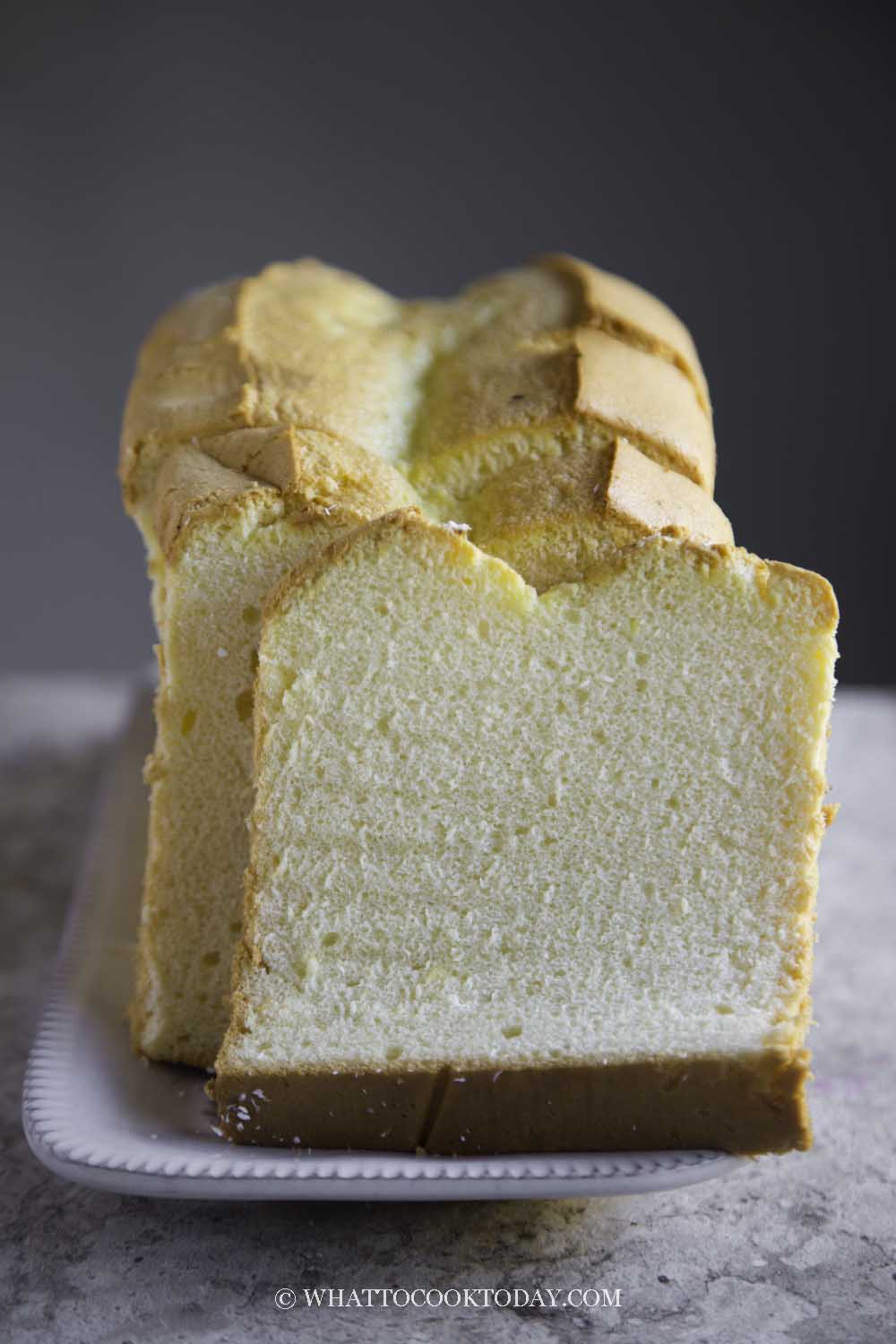Orange Pillow Loaf Cake
Your folders
Your folders
Prep Time: 15 minutes
Cook Time: 73 minutes
Total: 88 minutes
Servings: 10
Author : Marvellina

Ingredients
Export 9 ingredients for grocery delivery
Instructions
Step 1
You can use 8 1/2 x 4 1/2 x 2 1/2 loaf pan or 7 1 /2 x 4 1/2 x 4 loaf pan or 9 x 5 loaf pan. I use 7 1/2 x 4 1/2 x 4 loaf pan. It's a very tall pan and yield a very tall cake. If you use 9 x 5 loaf pan, the cake will be wider and shorter, which is fine too. There's no right or wrong here
Step 2
Whether your pan has non-stick coating or does not have non-stick coating will work here. Line the bottom of the pan with parchment paper for easier release. I didn't line the side. My loaf pan has a non-stick coating
Step 3
Preheat your oven to 350 F (180 C) for conventional oven. If you have a convection oven, I suggest lowering the temperature by 25 F (15 C). Place the oven rack 3rd rack from the bottom (or adjust accordingly, you will know your oven best)
Step 4
The eggs and juice need to be at room temperature. Carefully separate the egg yolks from the whites while they are still cold. They are easier to separate when they are cold. We also need one whole egg for this recipe. Let them come to room temperature
Step 5
Combine the yolks, one whole egg, sugar, oil, orange juice, and its zest with a whisk. Sift in the cake flour, cornstarch, and salt. Use a whisk to combine again into a smooth and rather thick batter. Set aside
Step 6
Beat the egg whites on medium speed until frothy, add cream of tartar or lemon juice/vinegar and whip until it turns whitish and air bubbles are fine. Gradually add the sugar as you beat, in 3 batches. I beat them at medium speed (speed 6 on Kitchen Aid). This will take a bit longer compared to beating at high speed. I used to do higher speed (speed 8), but the meringue is smoother and nicer when I maintain the speed on 6 and much more stable too. I highly recommend stopping several times to check on the consistency and scraping the sides of the bowl to make sure no sugar left on the side of the bowl. Whip until you reach a stiff peak but still have a slight bent on the tip. Then lower the speed to 4 and whip for 1 minute to even out large bubbles and stop beating
Step 7
Gently fold 1/3 of the meringue into the thick batter. Using a whisk, using a cutting motion and fold over to mix. Repeat this motion several rounds. Continue on with the second 1/3 of the meringue again to mix. For the last 1/3 of the meringue, use a rubber spatula instead to ensure you get all the batter at the bottom of the bowl mixed in as well. Use a cut down in the middle and fold over motion to fold gently but quickly. Make sure you don't see any more white meringue. The mixture should be fluffy and voluminous.
Step 8
Pour the batter into the prepared loaf pan. Use a rubber spatula to smooth the surface. Gently tap the pan on the countertop 2-3 times to pop any air bubbles. Use a skewer to draw a zig zag to pop bubbles inside the cake batter, carefully not to disturb the parchment paper lining at the bottom
Step 9
Place the loaf pan on the rack and bake for 12-13 minutes or until the top has dried to touch. Take it out and use a very sharp knife to cut one slit in the middle, about 1/2 an inch deep is sufficient. When the cake cracks, it will follow this line that you created instead of just cracking all over the place. Try to accomplish this within one minute
Step 10
If you are nervous about taking out the cake to make a slit, you can put about 30 grams of softened butter in a piping plastic bag, cut off the tip and squeeze the butter in the middle of the loaf. As the cake rises, it will crack following this line as well. Either method works
Step 11
Put the loaf pan back into the oven. Reduce the temperature to 300 F (150 C) for conventional oven. Lower the temperature by 20 F or 15 C for convection oven. Bake for another 60 minutes. The cake should be dry to touch and springs back lightly when you touch
Step 12
Drop the loaf pan from about 10 cm height on the counter several times to prevent shrinkage when you pull the cake out of the oven. Then carefully invert the pan upside down immediately on two jars or cups on the side. Please don't be tempted to remove it from the pan if it's still warm. It takes about one to two hours to cool down completely
Step 13
Once it's cool down completely, use a spatula knife to run through the 4 sides and then gently tip the loaf pan over to release the cake. Peel off the parchment paper from the bottom
Step 14
I suggest that you wait for 24 hours before serving the cake (if you can wait). The flavor always gets better the next day compared to when you serve it on the same day
Step 15
Let the cake cool down completely. Store the cake in an air-tight container for up to 3 days at room temperature. The cake remains soft and fluffy for about 3 days